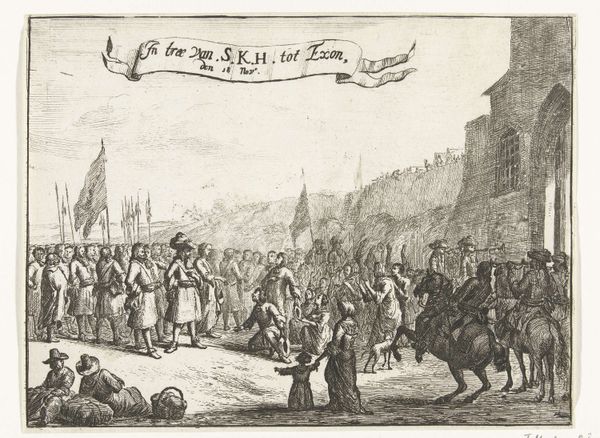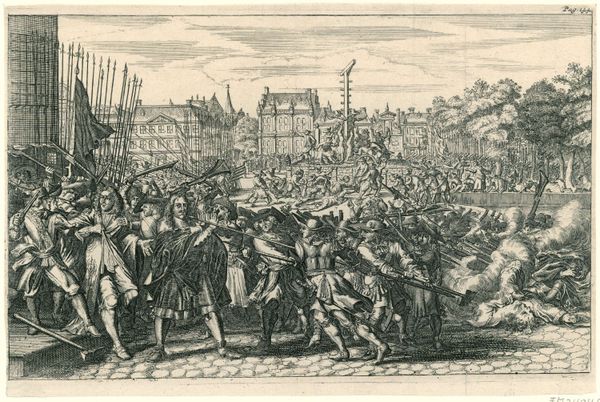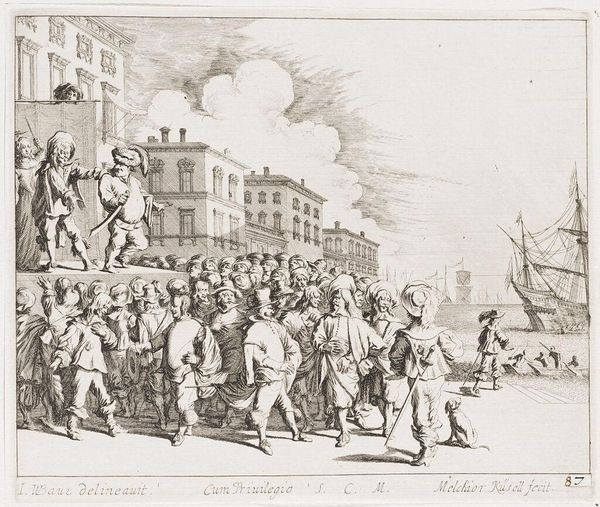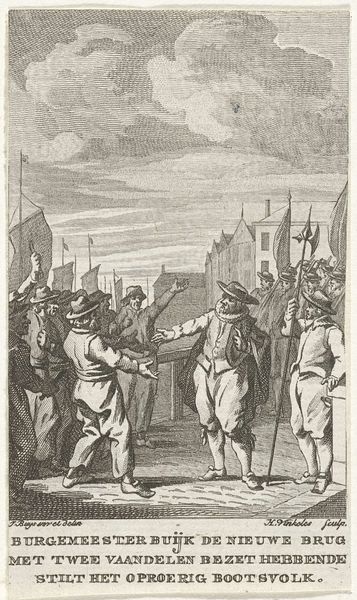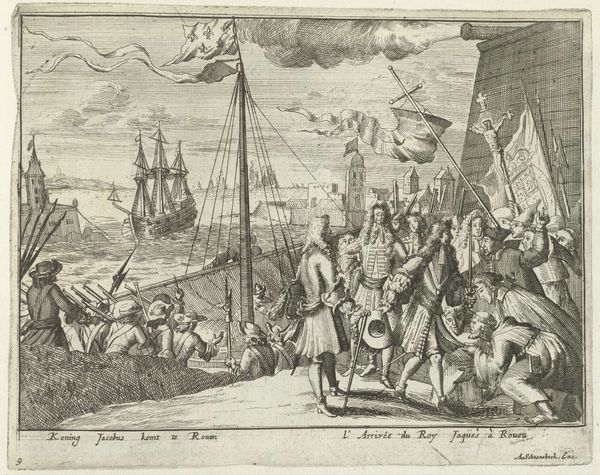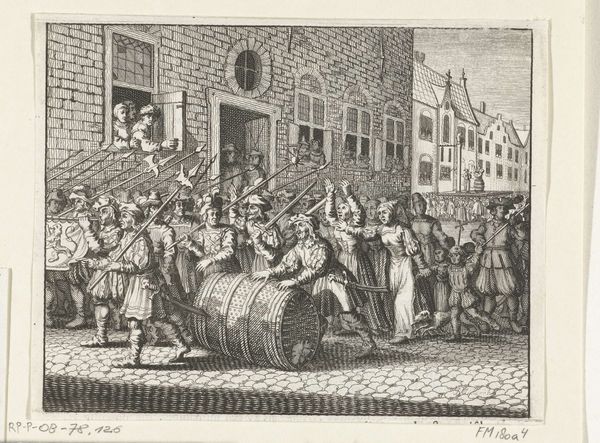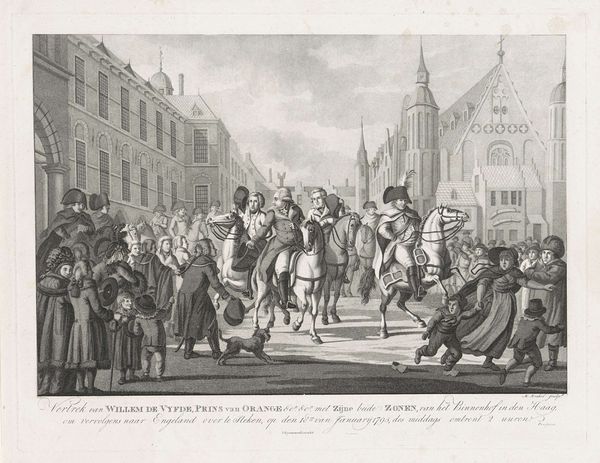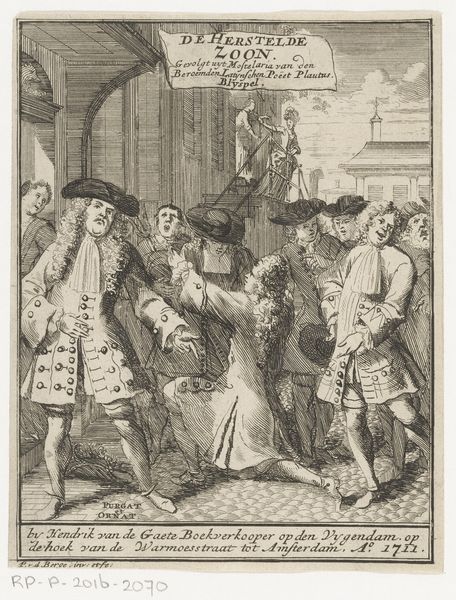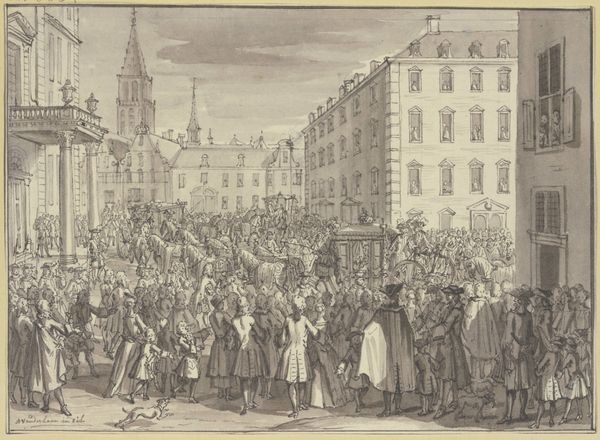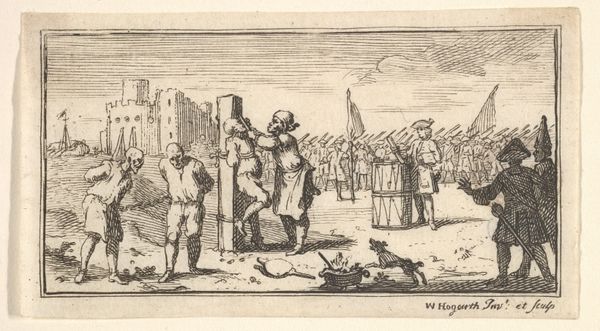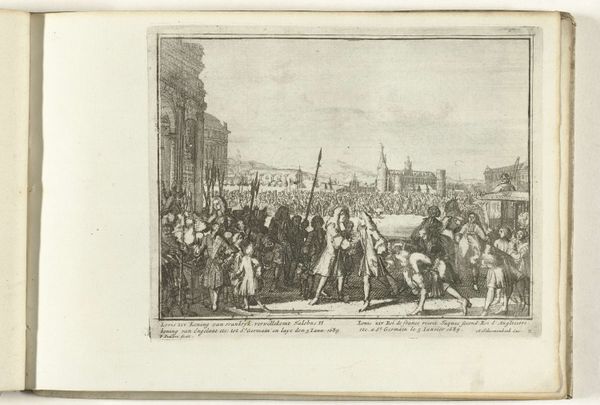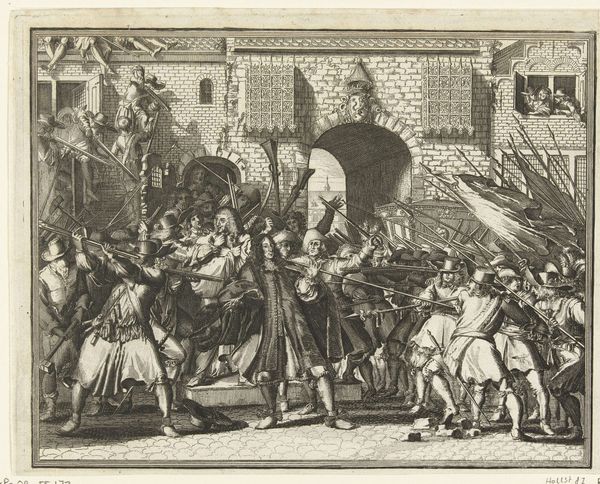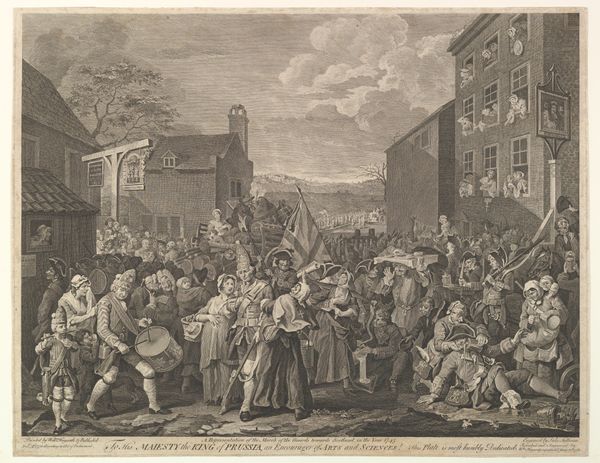
Oproer bij de veroordeling van Cornelis Halewijn en Herman Jansz. te Antwerpen in 1559 1652 - 1659
0:00
0:00
drawing, watercolor, pen
#
drawing
#
baroque
#
dutch-golden-age
#
watercolor
#
coloured pencil
#
pen
#
genre-painting
#
history-painting
#
watercolor
Dimensions: height 104 mm, width 145 mm
Copyright: Rijks Museum: Open Domain
Curator: Look at the way Jacob van der Ulft has captured the unease of this assembly, the way the tension radiates off the figures, in "Riot at the Sentencing of Cornelis Halewijn and Herman Jansz. in Antwerp in 1559." He made it in the Dutch Golden Age between 1652 and 1659. The meticulous lines created with pen, colored pencil and watercolor capture this turbulent event with astounding realism. Editor: I'm immediately struck by the implied violence. The way the light washes over the faces of the figures at the fore only highlights their seeming anticipation of or participation in the uprising that's about to occur. Curator: Indeed, consider how the figures bearing pikes, halberds, and muskets function less as a representation of power but are instead signifiers of social division, of a community fractured and struggling against a central authority. Editor: The image definitely speaks to that tradition of civil unrest, reflecting not just this single historical flashpoint in Antwerp, but any moment where citizens are in resistance to a ruling power. You have the sense of righteous fury, of a simmering outrage about to boil over, that has become iconic in Western thought. Curator: Right. Ulft is embedding a deeper commentary about the complexities of justice. Halewijn and Jansz, minor noblemen, were executed for heresy, and the riot becomes emblematic of the larger religious conflict brewing in the Low Countries and broader socio-political dynamics and cultural attitudes regarding free speech. Editor: What I appreciate is how Van der Ulft subtly implies the power dynamics at play during this era by capturing what the act of speaking freely entailed in early modern Antwerp and, through his portrayal, makes those figures live again centuries later. Curator: Precisely. In that way it carries echoes even today, suggesting the delicate nature of free expression when juxtaposed with governmental authority, an observation as relevant today as it was in the 17th century. Editor: I see it. Van der Ulft reminds us that images have always been political tools, capturing moments of struggle that continue to resonate, informing the way we perceive justice and authority in the modern world. Curator: An effective translation of past conflict into present-day consciousness through an economy of lines and hues. Editor: Yes, a stark reminder of how dissent has consistently been visualized throughout history.
Comments
No comments
Be the first to comment and join the conversation on the ultimate creative platform.
